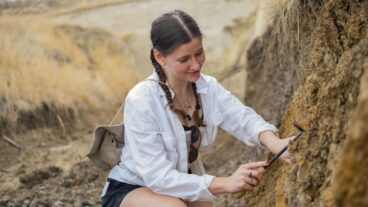
The Israel Museum, the country’s largest museum and most comprehensive collection of art in the Middle East, unveiled its $100 million facelift this summer. The two-year renewal project was financed by 21 worldwide donors and carried out by architectural firms in New York and Tel Aviv.
Situated on 20 acres overlooking the western entrance to Jerusalem, the Israel Museum houses 500,000 objects arranged to convey “a narrative from the beginning of time till today,” museum director James Snyder told a press tour prior to the official July 26 opening.
Snyder, a Pittsburgh, Pennsylvania, native, joined the museum in 1996 after serving as deputy director of The Museum of Modern Art in Manhattan. Among his goals has been broadening the museum’s appeal as an international cross-cultural institution.
Accordingly, highlights of his tenure include the acquisition of the Beth Shean Venus (second century CE); the First Nuremberg Haggadah, Germany (ca. 1449); Nicolas Poussin’s Destruction and Sack of the Temple of Jerusalem (1625); Rembrandt van Rijn’s St. Peter in Prison (1631); Jackson Pollock’s Horizontal Composition (1949); the Arturo Schwarz Collection of Dada and Surrealist Art; and Olafur Eliasson’s Your Activity Horizon (2004). The museum recently received a major collection of European and American photography.
The renewal project is the most comprehensive capital undertaking since the Israel Museum’s founding in 1965. Related projects included the $3 million restoration of the Shrine of the Book housing the Dead Sea Scrolls in 2004, and the $6 million expansion of the complex to encompass the 50:1 scale model of Jerusalem in the Second Temple period, as well as a new Dead Sea Scrolls Study Center, in 2006.
Visitors flow through re-designed space
Fully handicap-accessible for the first time in its history, the museum’s three reconstructed and reinstalled collection wings for archaeology, the fine arts, and Jewish art and life are now connected through a three-story gallery entrance pavilion. Visitors can navigate intuitively through a chronological presentation of the museum’s archaeology holdings from the land of Israel; the first permanent galleries for Israeli art; and a newly configured Synagogue Route, incorporating four reconstructed synagogues from around the world. The newest, from 18th century Suriname, is “a showstopper,” Snyder tells ISRAEL21c.
Designed by James Carpenter Design Associates, New York, to resonate with Alfred Mansfeld and Dora Gad’s original modernist geometric plan, the renovated campus allows for an integrated experience of the museum’s art and archeology, landscape, and architecture.
Three newly constructed glass entry pavilions – housing ticketing and information, retail, and restaurant facilities – are shaded within cast terracotta louvered shade housings, designed to soften and diffuse the bright Mediterranean light while unifying interior and exterior spaces. Even the construction materials reflect a multinational approach; Carpenter, who led a tour of the facility, said the glass was manufactured in Turkey, the terracotta in Germany.

Snyder tapped Carpenter after learning of his design and execution of the exterior envelope and entrance lobby for Seven World Trade Center in Manhattan, completed in 2006. Carpenter is known for his innovative use of glass and light.
“We thought not about his experience in building buildings,” said Snyder, “but rather in designing the experience of moving through built places.” Efrat-Kowalsky Architects, Tel Aviv, worked with Carpenter on the project.
Renovations didn’t impede visits or exhibits
The museum remained open while 90 percent of the campus was under construction or reconstruction, Snyder recounted, noting that, “We nonetheless had an average of 500,000 visitors in each of those years. If you remember that Jerusalem has 700,000 residents and Israel has 7.5 million residents; this is no small number of people.”
During that time, the museum also sent exhibitions to 19 venues on four continents, and produced new collection books on Israeli art, modern art, and archeology.
The $100 million capital campaign, $17.5 million of which came from matching support from the State of Israel, is the largest collective philanthropic effort ever undertaken for a single cultural institution in Israel. Snyder has also raised $60 million toward a planned $150 million endowment fund named for Jerusalem’s first mayor, Teddy Kollek, who first envisioned the Israel Museum.
“We are unusual in that we are thousands of miles away from those who are closest to us,” said Snyder of the philanthropists who contributed.
The museum campus includes the Ruth Youth Wing for Art Education and the Billy Rose Art Garden, an expansive sculpture garden designed by the Japanese-American artist Isamu Noguchi.













